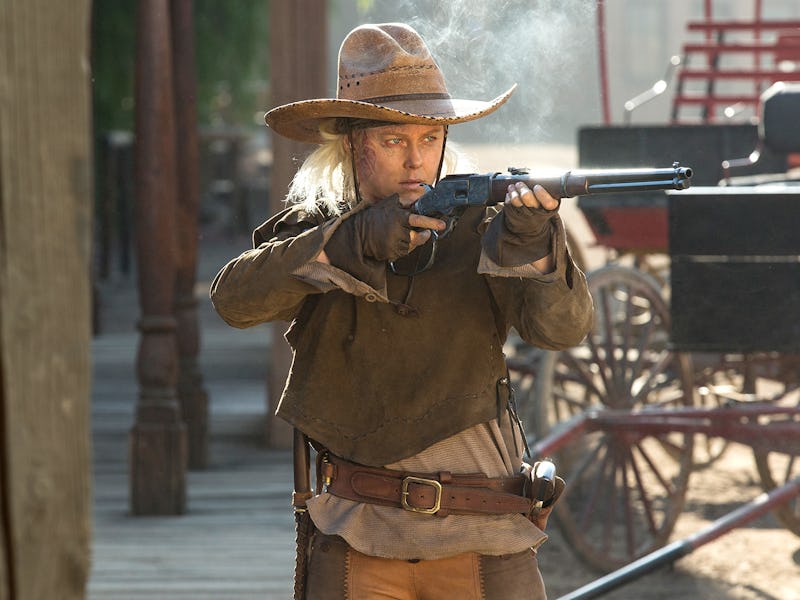'Westworld' Just Tipped Its 'Memento' Hand
"Dissonance Theory" was the most 'Memento'-like episode yet. Here's what it means for 'Westworld.'

In the fourth episode of Westworld, the mysterious Man in Black encounters an even more mysterious woman with a snake tattoo he must decode. For anyone familiar with Westworld showrunner Jonathan Nolan’s previous work, this was the ultimate “aha!” moment. For anyone unfamiliar with it, you’re in luck, because we are indeed familiar with it.
Jonathan Nolan wrote the short story on which the breakout indie film Memento was based. In the mind-bending film which was written and directed by his brother, Christopher Nolan — Guy Pearce’s character Leonard wakes up every day a blank slate, with no memory of the previous day, much like Westworld’s Dolores, Maeve, and other hosts. Leonard must piece together the true nature of his reality and solve his wife’s murder by using a series of clues that include an intricate web of tattoos on his body. Sixteen-years-too-late spoiler alert: When he eventually discovers the less than ideal true nature of his reality, he choses to let his future self continue living in ignorance.
Now, obviously Westworld is a different project, but writers often explore the same themes and ideas across their careers. And with “Dissonance Theory,” Jonathan Nolan has definitively shown that to be the case. But intriguingly, Westworld is splitting up the Leonard model into three distinct storylines it is braiding together.
Like Memento’s Leonard, the cowgirl-host Armistice is on a revenge mission tied to her body art. As she explains to the Man in Black, the pigment in her snake tattoo comes from the blood of those who slaughtered her family. Because in the heightened reality of Westworld, of course a character literally walks around painted in the blood of her enemies.
Armistice and The Man in Black in 'Westworld'
Also like Leonard, Dolores spends “Dissonance Theory” discombobulated, experiencing flashes of memory. At this point in the narrative, the audience does not know if she is as innocent and demure as she seems or if perhaps her memories indicate something more sinister about her character. Using Leonard as a model, we can expect the latter to be true.
Maeve embodies the third aspect of Leonard’s personality: His sense of self-discovery at the climax of Memento. “Dissonance Theory” is an hour of awakening for Maeve. She becomes aware that others are pulling the strings of her reality, and instead of fighting the system, she makes the conscious choice to ignore it and share a blood-soaked kiss with bandit Hector because, as she tells him, “I’m not crazy after all, and none of this matters.”
Hector and Maeve in 'Westworld'
Because we are only four episodes into the season, it remains to be seen whether Maeve will continue her “fuck it” mentality, whether Armistice’s revenge mission will give her and The Man in Black what they are looking for, and just how Dolores’s journey of self-discovery will manifest. But theories are flying around left and right that Westworld is not being upfront about its timelines — and since Memento operates on a non-linear timeline, that’s a safe bet to hang your white or black hat on.